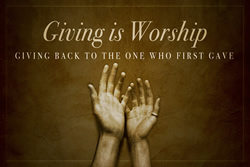Day 47, Chronological Bible Study Timeline. Map. Introduction to Leviticus. Go to today’s Bible reading (use your browser arrow to return): Leviticus 1–4
Note: The book of Leviticus is a procedural manual for offering sacrifices, observing dietary laws, and laws about purification. It was specifically for the Israelites, their priests, and their leaders. Yet, it’s full of rich spiritual meaning, which still applies to us.
If you just want to skim the reading and get the gist of it, I'ill summarize the procedures and significance of each offering in the next few Bible studies.
Restoring a broken relationship
How do we get back in their good graces if we offend someone? What actions should we take? What do we do if we offend God—what does he require? The Israelites didn’t have to ask; the LORD told them what he demands—holiness! Holiness is a sacred reverence for anything in God’s realm.
He's holy, meaning he's absolutely righteous, without sin or anything impure or unclean. Therefore, anything or anyone set apart to God must also be sacred.
But, if we offend his holiness (and who doesn't), what can we do? The book of Leviticus is an instruction manual explaining the visual and physical rituals the Israelites were required to perform to get back into the LORD’s good graces.Now, because of Jesus Christ, we don't have to perform rituals to gain God's favor. Still, the symbolism shows us why Jesus sacrificed himself for us.
Today, we'll observe the individual responsibilities of the Israelites in dealing with their offerings. We'll also look at four of the five basic kinds of offerings and their significance.
Individual Responsibilities
Each Israelite, who is guilty of unintentional sin, brings an acceptable sacrifice or offering to the tabernacle's east entrance for inspection. If it's approved by the priest, here is the general procedure:
- the guilty person places his hand upon the animal’s head (a symbol of identification and transference of sin or guilt). Then he slaughters, skins, or, in the case of a young dove or pigeon, plucks the feathers, crops the head, and divides it.
- The priests collect blood from the slaughtered animal or bird and wipe it on the bronze altar’s horns, sprinkle it on the sides, and pour the rest at the base.
- Fat from the animal is consumed on the altar, but the meat’s best parts are cooked and shared.The remainder of the animal or bird is taken outside the tabernacle area and burned. The procedure and offerings differ slightly according to the type of offerings.
Application for us: We also bear the responsibilities for our sins, but here's good news—Jesus paid the price for them (Romans 3:23-24; Romans 6:23; Hebrews 10:14)— we don’t have to offer the sacrifices of animals or birds or perform specific procedures and rituals!
The Burnt Offering (or Whole Offering)
The burnt offering is primarily a dedication offering given voluntarily. Although it's often done with sin offerings and grain offerings, in this case, a person dedicates an entire male animal from his herd or flock (always one without defect). With a poor person, a dove or pigeon may be offered, and only the animal's hide or the bird's crop isn't burned.
Application for us : What kind of dedication offering does God require of us today? After we believe and accept Christ’s payment for our sins, we're forgiven. In turn, we should give our lives in total dedication to God (Romans 12:1; Philippians 1:21).
The Grain Offering
This offering always accompanies the burnt offering and fellowship offerings. With a poor person, he may give a grain offering in place of these.
The grain offering ingredients are fine flour with olive oil and incense, but no yeast or honey. The people may offer it in its dry form or baked, grilled, or pan-fried as unleavened cakes. However, on the altar, they must always sprinkle it with salt. The meaning of this is unclear, but salt may typify the eternal forgiveness of the covenant—it is the only thing not burned up.They offer a portion of the grain offering in dedication before they eat it. They give some of it to the priests for their food.
Application for us. The grain offering typifies Christ's dedication, the bread of life who gave himself for the world. We have eternal spiritual life if we figuratively partake of him (John 6:48-63, more...).
The Fellowship or Peace Offering
The Fellowship or Peace Offering
This offering is voluntary (except for Thanksgiving time, the Feast of Weeks, which celebrates their crops' harvest). It's an offering expressing thanks for God's blessing or in fulfillment of a vow (Leviticus 7:16; 27:9-10).Unlike the burnt offering, the animal from the herd or flock may be male or female, but it must be unblemished. Like the burnt offering, the priests sprinkle blood on the altar, and the rest they pour out at the base. However, unlike the burnt offering , just the fat and the kidneys are consumed. They roast the rest of the animal and share it with the priest, the person who brought the offering, and his family.
Application for us: Although, as Christians, we're not required to offer sacrifices, we, too, should give thank offerings to God for the blessings he gives upon us (Psalm 107:1,2,8; Philippians 4:6).It's good to share times of celebration at Thanksgiving and other days when we remember the goodness of the LORD.
The Sin Offering
The sin offering is for unintentional offenses. Depending on whether a priest, the entire community, a community leader, or just a community member sins, the requirements differ.
In this offering, the priest sprinkles the animal's blood before the sanctuary curtain (Holy Place) instead of on the bronze altar. Like the fellowship offering, only the animal's fat and the kidneys are burned as an acceptable sacrifice to the Lord. All this is done to make amends or atonement for a person's sin by substituting the animal's life for his life. The rest of the animal is not consumed or shared; it's taken outside the camp and burned. Thus, forgiveness for the one offering the sacrifice is granted, and God restores his relationship (Leviticus 4:20, 26, 31, 35).
Application for us: The sin offering of the Old Testament typifies the sin offering of Christ for us.
The high priest carries the blood of animals into the Most Holy Place as a sin offering [on the Day of Atonement, which we will discuss later], but the bodies are burned outside the camp. And so Jesus also suffered outside the city gate to make the people holy through his own blood. (Hebrews 13:11-12, NIV)
God made him [Jesus] who had no sin to be sin or us, so that in him we might become the righteousness of God. (2Corinthians 5:21, NIV).
God presented him [Jesus] as a sacrifice of atonement, through faith in his blood. He did this to demonstrate his justice, because in his forbearance he had left the sins committed beforehand unpunished. (Romans 3:25, NIV)
…live a life of love, just as Christ loved us and gave himself up for us as a fragrant offering and sacrifice to God.” (Ephesians 5:2, NIV)
He [Jesus Christ] is the atoning sacrifice for our sins, and not only for ours but also for the sins of the whole world.” (1John 2:2, NIV)
This is love: not that we loved God, but that he loved us and sent his Son as an atoning sacrifice for our sins. (1John 4:10, NIV)
Discussion
What is the general purpose for most of these types of offerings? What do we rely upon today to bring restoration with God?
The Israelites had individual responsibilities in offering their sacrifices. What responsibilities do we have that bring forgiveness today? (If we _________ our sins, 1John 1:9)
What kind of dedication offering should we give God today?
Focus Verse
Psalm 118:19-21 (NIV)
Open for me the gates of righteousness; I will enter and give thanks to the LORD. This is the gate of the LORD through which the righteous may enter. I will give you thanks, for you answered me; you have become my salvation.
1. For a detailed but very helpful understanding of the Old Testament sacrifices and their significance, consult the study on Leviticus in The Bible Knowledge Commentary of the Old Testament by Walvoord and Zuck, ©1985, pp. 163-214. The charts on pages 168-171 are particularly helpful.
2.The burnt offering is different than the other offerings. It's a dedication offering of the entire animal to the Lord, except the hide, which is burned outside the camp.
3. See Numbers 18:19; 2 Chronicles 13:5; The Bible Knowledge Commentary of the O.T., by Walvoord and Zuck, ©1985, p.177
4. If you want a much better and deeper understanding of the Levitical sacrifices, I recommend this series from the Tabernacle Man. Here is his introduction. He has a series of these. If you have time, it's time well-spent!
Write a private prayer response to today’s Bible study:
Please send your comments to me, Rod, the author
Looking Ahead: What can we do about our guilt? After we confess our sins, do we have any responsibilities in regard to our former actions? Find out in our Next Lesson called Guilt and Responsibility.
Back to top of page
Return to Chronological Bible Studies main page
Go to Scriptures main page
Go to Topics main page
re-edited 2-16-23
COPYRIGHT @ 2019, MASTER'S TOUCH BIBLE STUDIES






